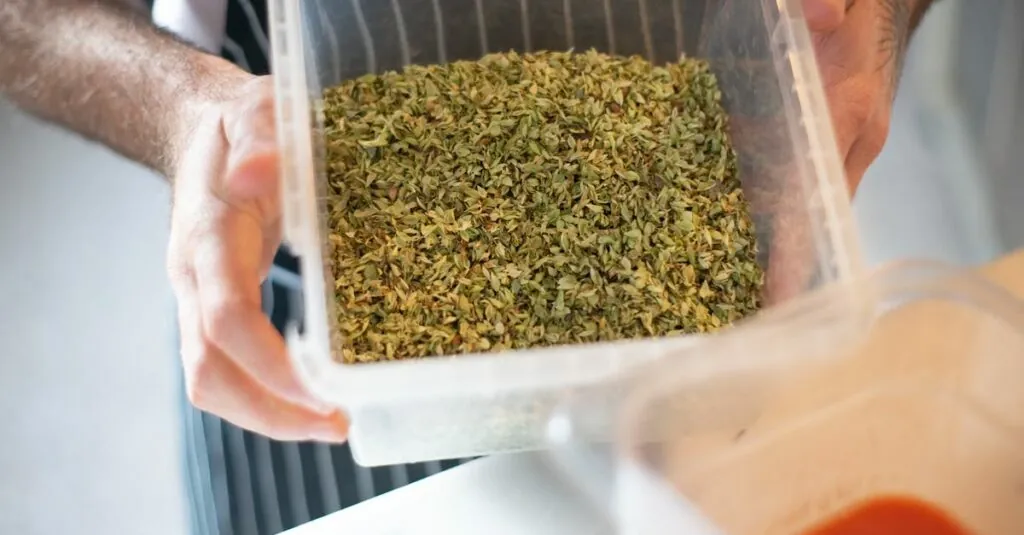Table of Contents
ToggleEver wondered how to make your meals burst with flavor without drowning them in sauces? Enter the world of dry cooking techniques, where the magic happens without a splash of liquid in sight. These methods not only enhance the natural taste of ingredients but also save you from the guilt of a calorie-laden sauce.
From roasting to grilling, dry cooking techniques can transform even the most mundane vegetables into culinary masterpieces. It’s like giving your food a spa day, letting it shine in its natural glory. So, if you’re ready to elevate your cooking game and impress your friends with your newfound skills, buckle up. It’s time to explore the art of cooking dry—because who needs a swimming pool when you can have a flavor party instead?
Overview of Dry Cooking Techniques
Dry cooking techniques focus on enhancing natural flavors without adding moisture. These methods include roasting, grilling, baking, and broiling. Each technique creates distinct textures and flavors, transforming even basic ingredients into extraordinary dishes.
Roasting involves cooking food in an oven while exposed to dry heat. This method caramelizes sugars in vegetables, deepening their sweetness. Meats benefit from roasting as well, developing a golden crust that seals in juices. For example, roasted carrots become tender and flavorful when cooked at high heat.
Grilling utilizes direct heat from a grill or stovetop. The high temperature imparts a smoky flavor and pleasing char marks to meats and vegetables. Grilled zucchini and bell peppers make excellent accompaniments to various dishes, adding both color and taste.
Baking is a versatile technique mainly for breads and pastries. It transforms raw dough into delicious treats. While some may associate baking with desserts, savory items like quiches also thrive under this method.
Broiling operates similarly to grilling, but heat comes from above. This method quickly cooks food, while maintaining moisture. Broiled fish retains its delicate texture, while the surface gains a crispy finish.
Each dry cooking technique serves a specific purpose, allowing cooks to explore flavor profiles. Experimenting with these methods showcases the versatility of ingredients, leading to impressive and satisfying meals. Mastering dry cooking techniques elevates culinary skills and creates nutritious options without unnecessary calories.
Common Dry Cooking Techniques
Dry cooking techniques enhance flavors without adding sauces. Each method offers unique characteristics that elevate a range of ingredients.
Baking
Baking involves using dry heat to turn raw dough into bread, pastries, and more. Heat circulates in the oven, creating a golden, crisp exterior while maintaining moisture inside. It allows for even cooking and versatility in recipes. Popular baked goods include cakes, muffins, and pizza. The Maillard reaction occurs, resulting in a delightful browning and complex flavors.
Roasting
Roasting applies dry heat, typically in an oven, to brown and caramelize foods. This technique creates a rich, savory flavor in meats and vegetables. Carrots, potatoes, and squash thrive when roasted, developing tenderness along with a pleasingly caramelized surface. Utilizing high temperatures helps achieve a delightful crust. Techniques like tossing with oil and seasonings before cooking enhance the dish’s overall flavor.
Grilling
Grilling employs direct heat from below, creating distinctive char marks and smoky flavors. Foods such as meats and vegetables obtain a crispy exterior while remaining juicy inside. High temperatures cook quickly, maximizing flavor and texture. Popular options include steaks, chicken, and bell peppers. Control over heat levels allows cooks to adapt techniques for both high-heat searing and slower cooking, promoting versatility.
Benefits of Dry Cooking Techniques
Dry cooking techniques offer numerous benefits, enhancing both health and flavor in meals. These methods allow cooks to elevate ingredients while retaining their essential qualities.
Health Considerations
Dry cooking techniques help minimize added fats and oils, making meals healthier. Grilling and roasting typically require less oil compared to frying. Keeping fat content low supports overall health, particularly for those monitoring calorie intake. Foods cooked this way often retain nutrients better, especially when using high temperatures for shorter durations. Fresh vegetables and lean proteins transform into wholesome meals packed with vitamins and minerals. Additionally, reducing sauces limits sugar and sodium intake, aligning with dietary goals for balanced nutrition.
Flavor Enhancement
Dry cooking methods intensify natural flavors, creating rich and satisfying meals. Roasting caramelizes sugars, producing complex, sweet notes in vegetables. Grilling introduces a smoky flavor that enhances meats and vegetables alike. The Maillard reaction during baking or broiling develops a desirable crust, elevating textures and aromas. Each technique allows the food’s inherent flavors to shine without the distraction of sauces. These methods also encourage creativity, as cooks can experiment with spices and herbs to further enhance taste profiles. Embracing dry cooking techniques leads to diverse and flavorful dishes that please the palate.
Tips for Successful Dry Cooking
Successful dry cooking techniques rely on proper equipment and temperature control. Mastering these aspects boosts flavor and consistency in meals.
Equipment Recommendations
Choose the right tools for effective dry cooking. A reliable oven provides even heat distribution for roasting and baking. Investing in a grill ensures that foods achieve the desired char and smoky flavor. Use a broiler pan for broiling, which allows fat to drip away from the food. Optional tools include a meat thermometer, providing accurate doneness measurements, and a cast iron skillet, known for excellent heat retention. Having high-quality baking sheets enhances the browning process, resulting in crispy textures. Select equipment best suited for each cooking method to optimize results.
Temperature Control
Maintaining proper temperatures is crucial for dry cooking. Preheat the oven to the desired temperature for baking and roasting to ensure even cooking. Grilling requires careful control of heat zones, allowing for both direct and indirect cooking methods. Monitor cooking times closely to prevent overcooking or drying out foods. Use a meat thermometer to verify internal temperatures, ensuring meat reaches safe cooking levels without sacrificing juiciness. Adjust oven racks as needed to create different heat intensities, promoting versatility in cooking techniques. Proper temperature management guarantees flavorful, well-cooked dishes.
Embracing dry cooking techniques opens up a world of culinary possibilities. By focusing on methods like roasting, grilling, and baking, cooks can create meals that are not only flavorful but also healthier. These techniques enhance the natural tastes of ingredients while minimizing the need for added fats and oils.
With the right equipment and attention to temperature control, anyone can achieve impressive results in the kitchen. The journey into dry cooking is about exploring flavors and enjoying the process of creating nutritious meals. Ultimately, these methods empower cooks to elevate their dishes, making every meal a delightful experience.




